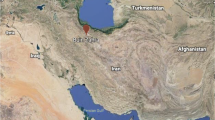Abstract
Hyperfiltration and nanofiltration membranes were tested with different water matrices for the removal of excess fluoride from underground water. Initially, the experiments were done with synthetic samples prepared by adding known amounts of sodium fluoride and calcium chloride in distilled water. The effect of feed water composition, pH, temperature of feed water, operating pressure, and feed water flow rate on separation efficiency of both types of membrane was studied by varying one parameter at a time and keeping all other parameters constant. Thus, the optimum operating conditions for the process were determined and after that ground water samples collected from three villages of district Gurgaon, Haryana, India (Farukhnagar, Wazirpur, and Mevka) were treated under optimum operational conditions. The mass transfer coefficient and membrane parameters were estimated for each data point using two-parameter model (Film theory and Solution-diffusion model) to study the concentration polarization on membrane surface. The nanofiltration membrane showed high percentage rejection of bivalent ions when compared to monovalent ions in a binary system. But in multicomponent system, when fluoride and calcium coexisted, the removal of fluoride was comparable to calcium removal because of the low solubility product of calcium fluoride. The results with RO membrane revealed that it removes practically all the ions present in water at high pressure, which need to be passed through a lime column to remineralize the water, to make it suitable for drinking purposes, whereas by running the system at low pressure which will further reduce the cost of operation, rejection percentage goes down to get permeate of required quality.







Similar content being viewed by others
Abbreviations
- C :
-
Molar density of solution (kmol/m3)
- D ij :
-
Coordinate direction perpendicular to the membrane (m)
- D SW :
-
Diffusion coefficient (m2/s)
- J S :
-
Solute volume flux (m3/m2 s)
- J W :
-
Solvent volume flux (m3/m2 s)
- k :
-
Mass transfer coefficient (m/s)
- K A :
-
Pure water permeability coefficient (kmol/m2 kPa)
- K B :
-
Solute transport parameter (m/s)
- N i :
-
Molar flux of component, i (kmol/m2 s)
- P :
-
Applied pressure across the membrane (bar)
- Δπ:
-
Osmotic pressure difference across the membrane (bar)
- R :
-
Observed rejection (%)
- R*:
-
True rejection (%)
- δ:
-
Thickness of concentration boundary layer (m)
- A:
-
Solute
- B:
-
Solvent
- S:
-
Salt
- W:
-
Water or solvent
- 1:
-
Feed solution
- 2:
-
Boundary layer solution
- 3:
-
Permeate solution
References
Barba D, Caputi P, Cifoni D (1997) Drinking water supply in Italy. Desalination 113:111–117
Dresner L (1972) Some remarks on the integration of the extended Nernst Planck equations in the hyperfiltration of multi component solutions. Desalination 10(1):27–46
Handa BK (1975) Geochemistry and genesis of fluoride containing groundwater in India. Groundwater 13:278–281
Murthy ZVP, Gupta SK (1996) Simple graphical method to estimate membrane transport parameters and mass transfer coefficient in a membrane cell. Sep Sci Technol 31(1):77
Pusch W, Mossa G (1978) Influence of pressure and or pressure differential on membrane permeability. Desalination 24:39–53
Rautenbach R (1997) Membranverfahran—Grundlagen der Modul—und Anlagenauslegung. Springer-Verlag, Berlin
Sarala K, Rao PR (1993) Endemic fluorosis in the village Ralla Anantpuram in Andhra Pradesh- An epidemiological study. Fluoride 26:177–180
Szpyrkowicz L, Barni A (1995) Nitrates removal from water by reverse osmosis. Ind J Environ Protec 15:561–564
Wilf M, Klinko K (1998) Effective new pretreatment for seawater reverse osmosis systems. Desalination 117:323–331
Wilf M, Klinko K (1994) Performance of commercial seawater membranes. Desalination 96(3):465–478
Winston Ho, Sirkar WS, Kamalesh K (1992) Membrane Handbook. Chapman and Hall, New York
Author information
Authors and Affiliations
Corresponding author
Rights and permissions
About this article
Cite this article
Arora, M., Maheshwari, R.C. Groundwater purification by membrane technology. Environmentalist 31, 20–25 (2011). https://doi.org/10.1007/s10669-010-9287-4
Published:
Issue Date:
DOI: https://doi.org/10.1007/s10669-010-9287-4




